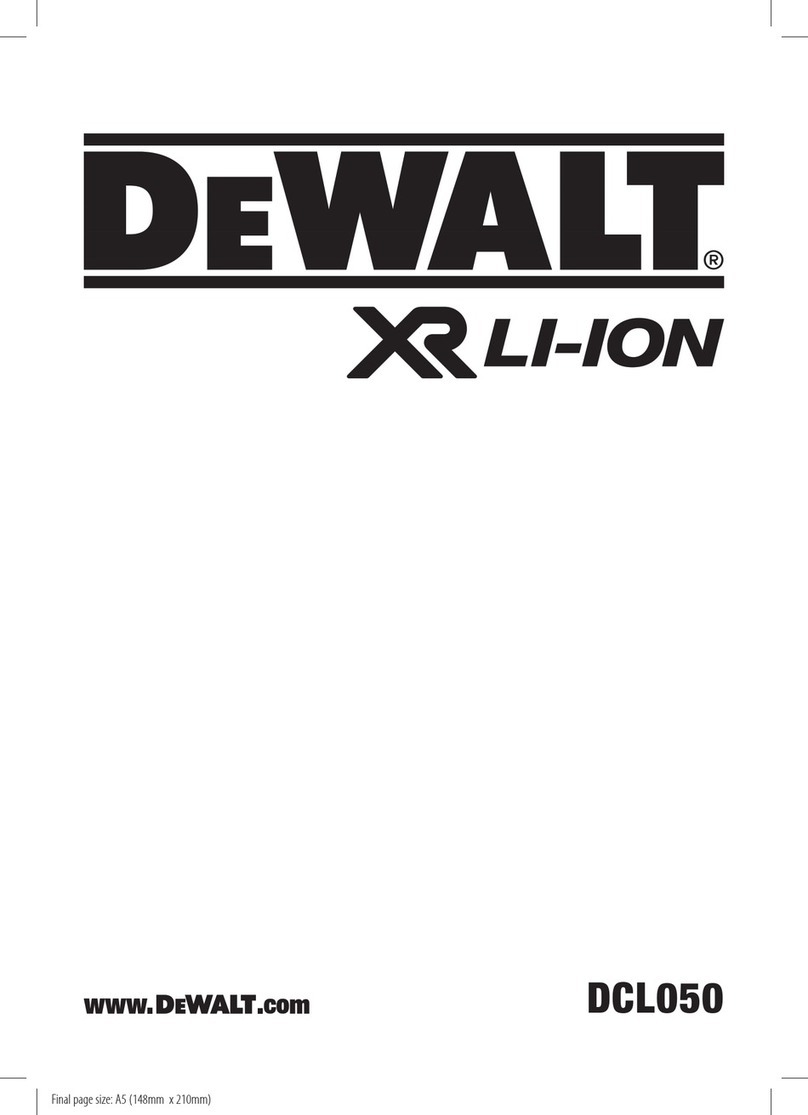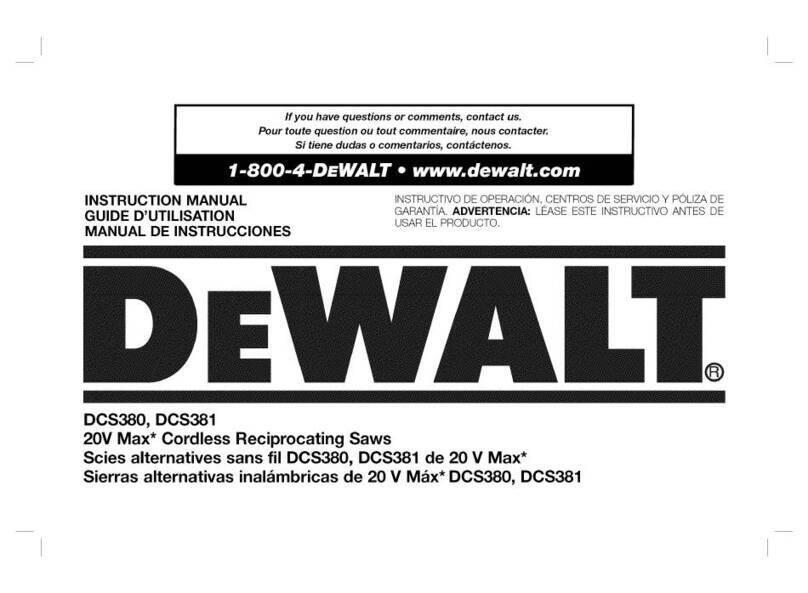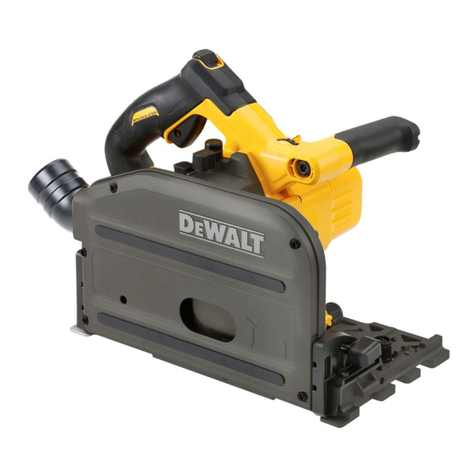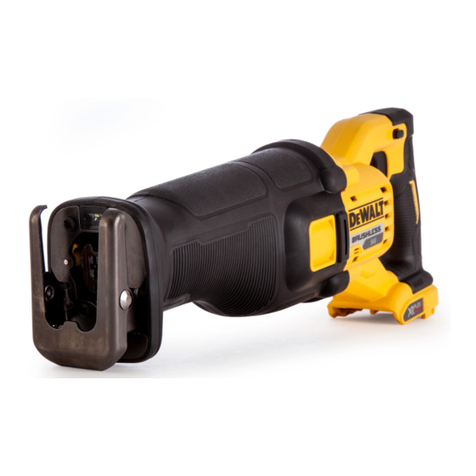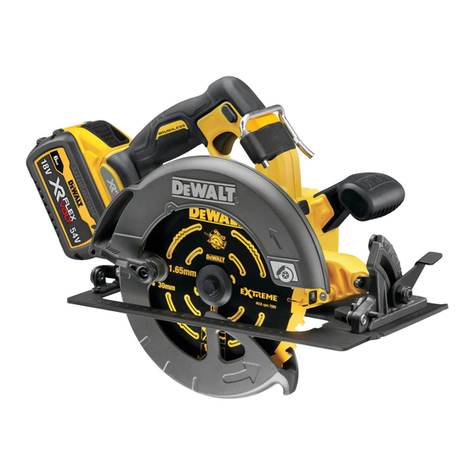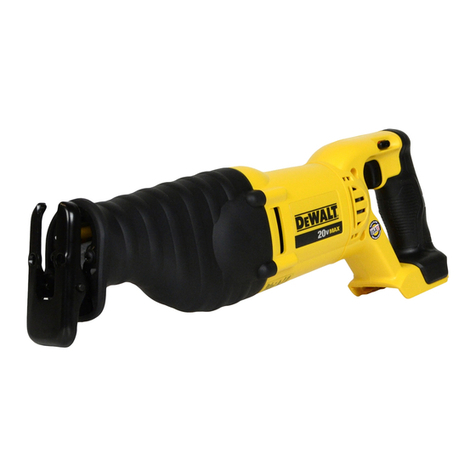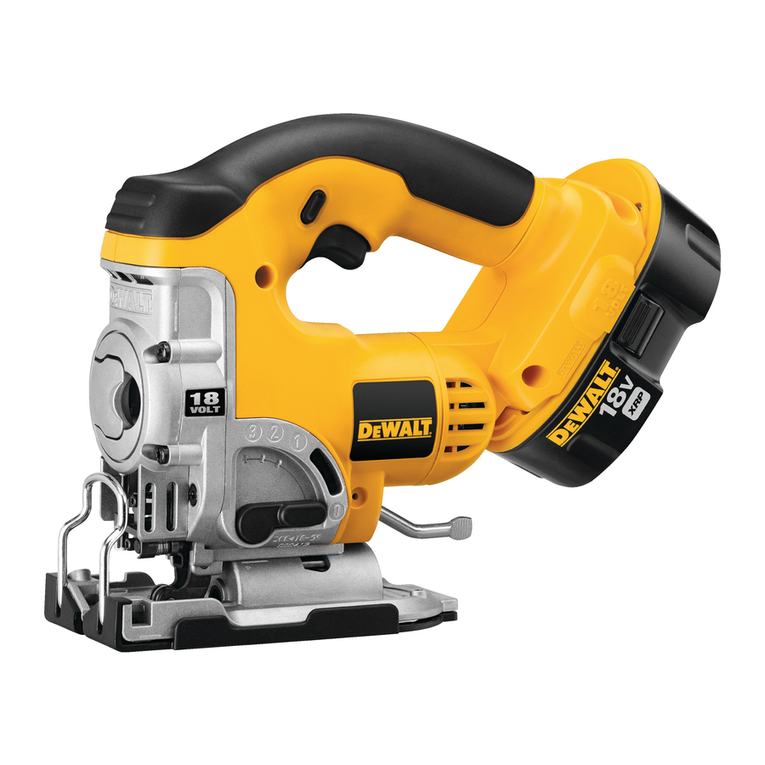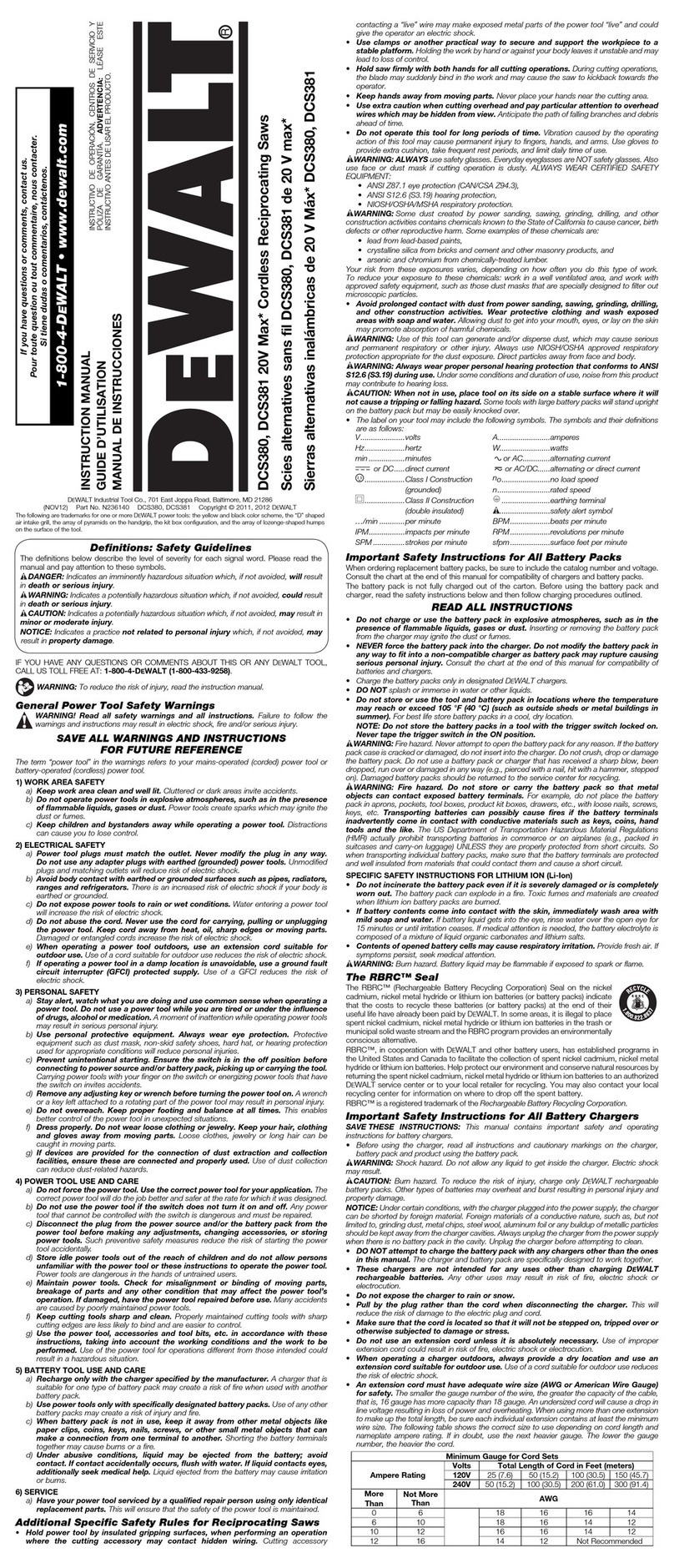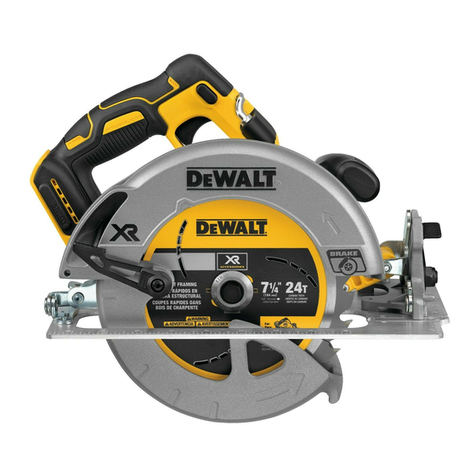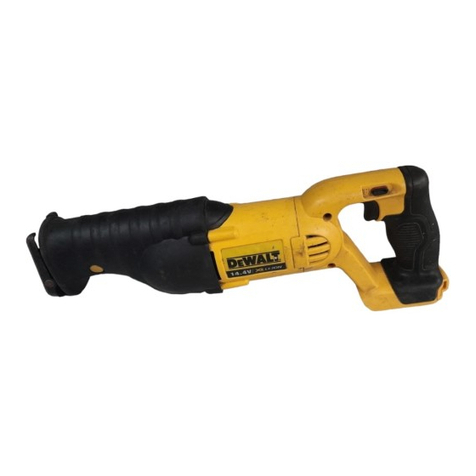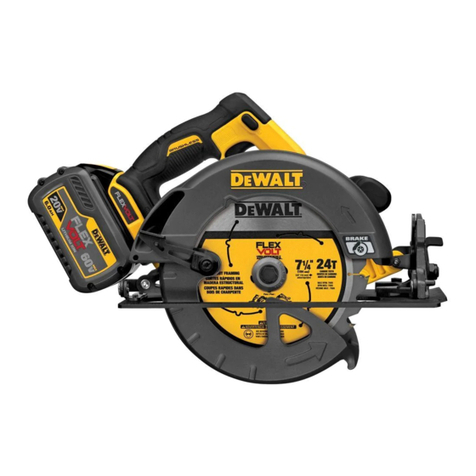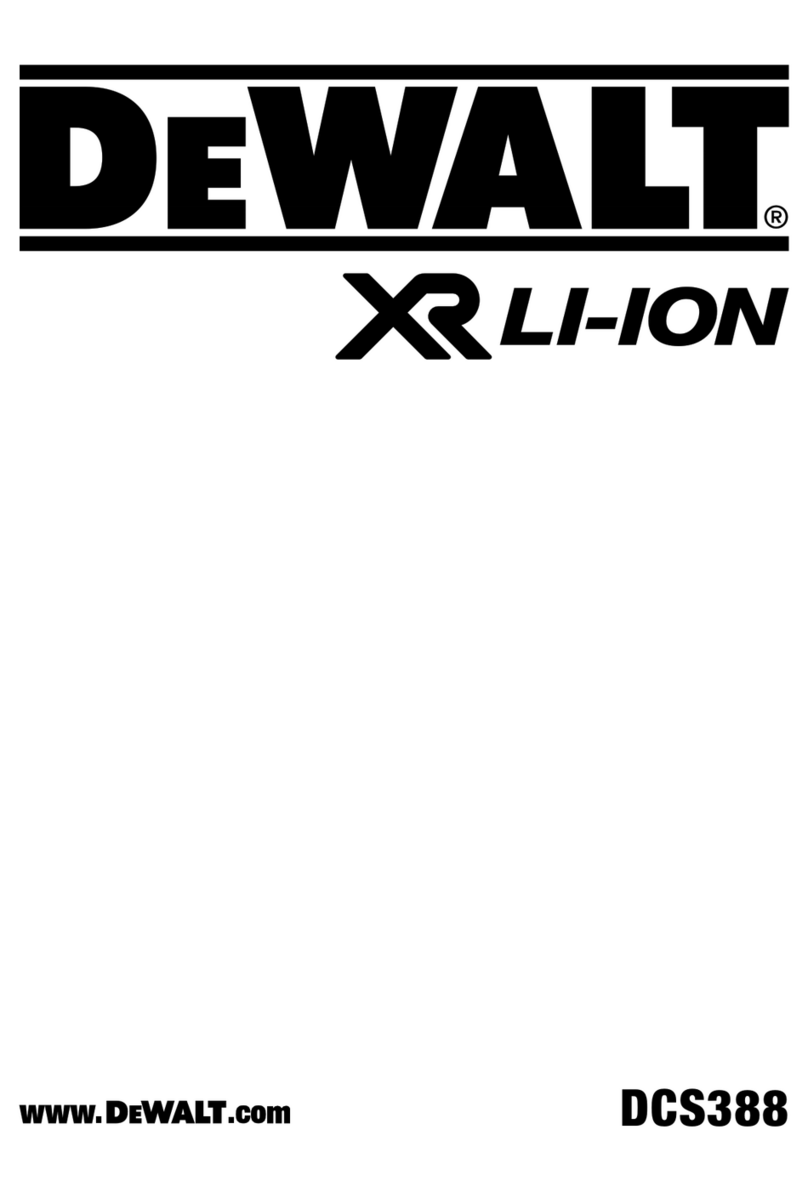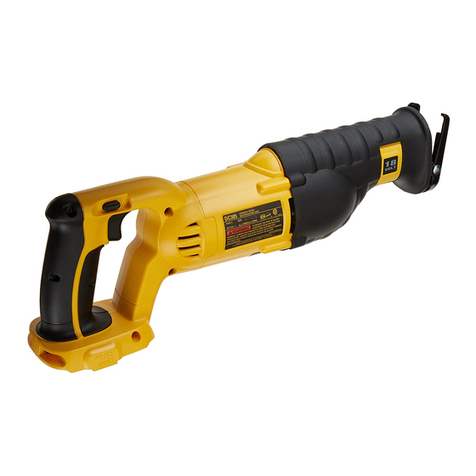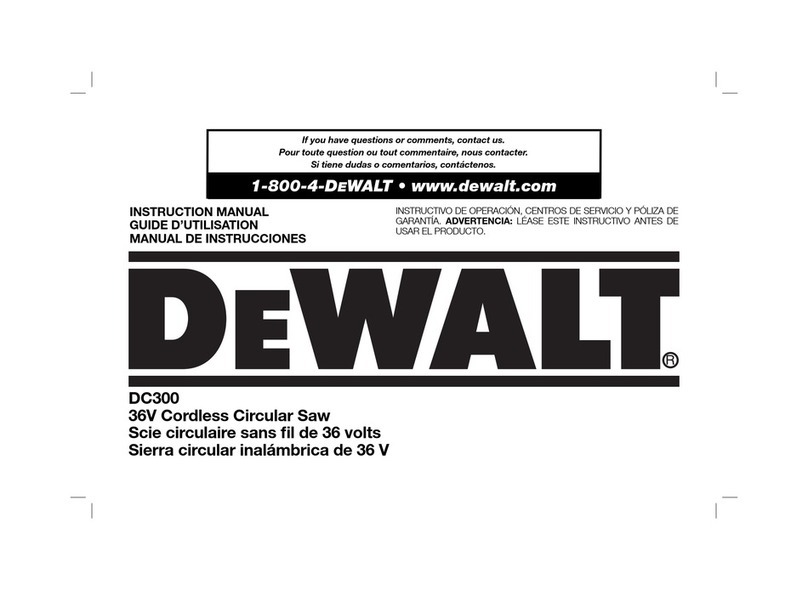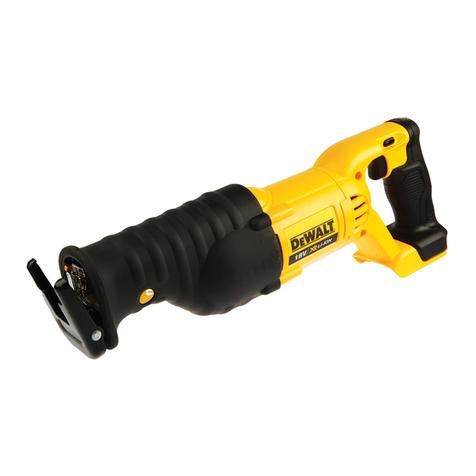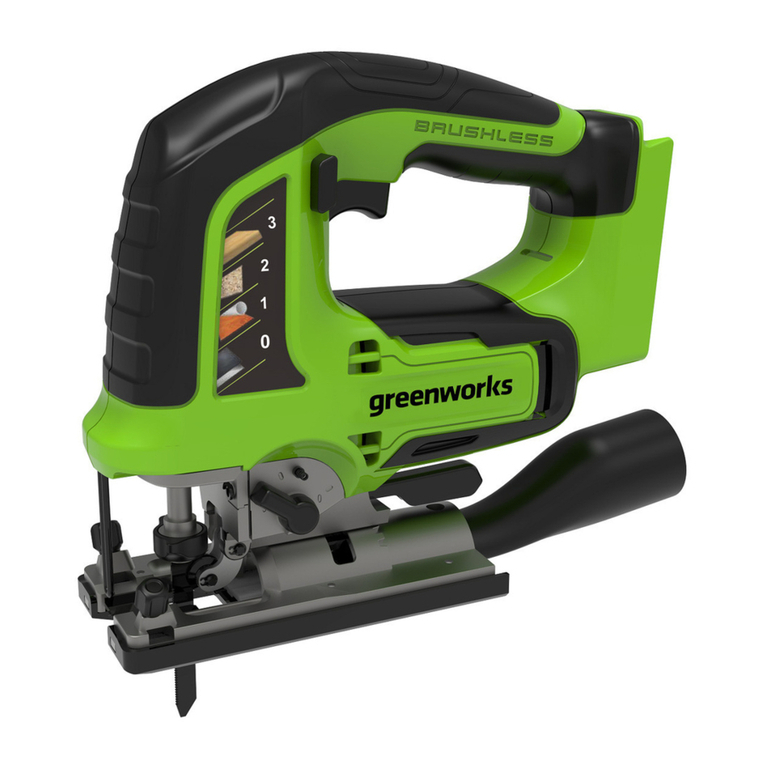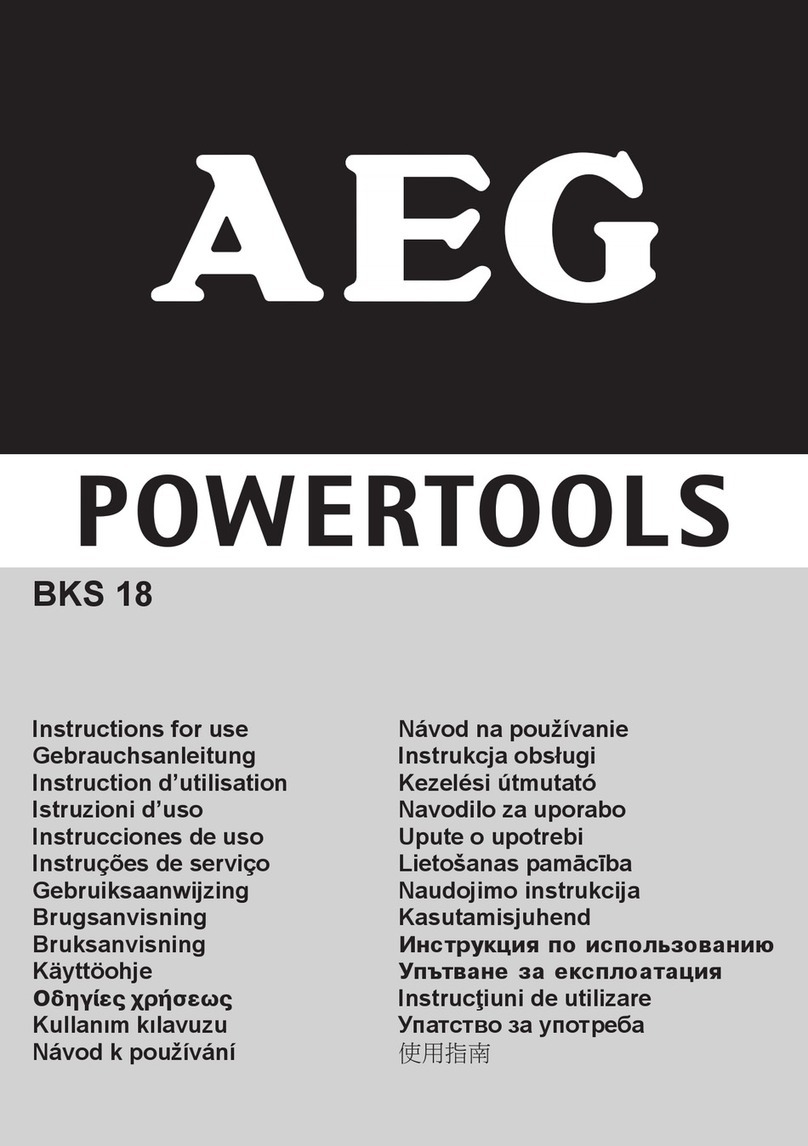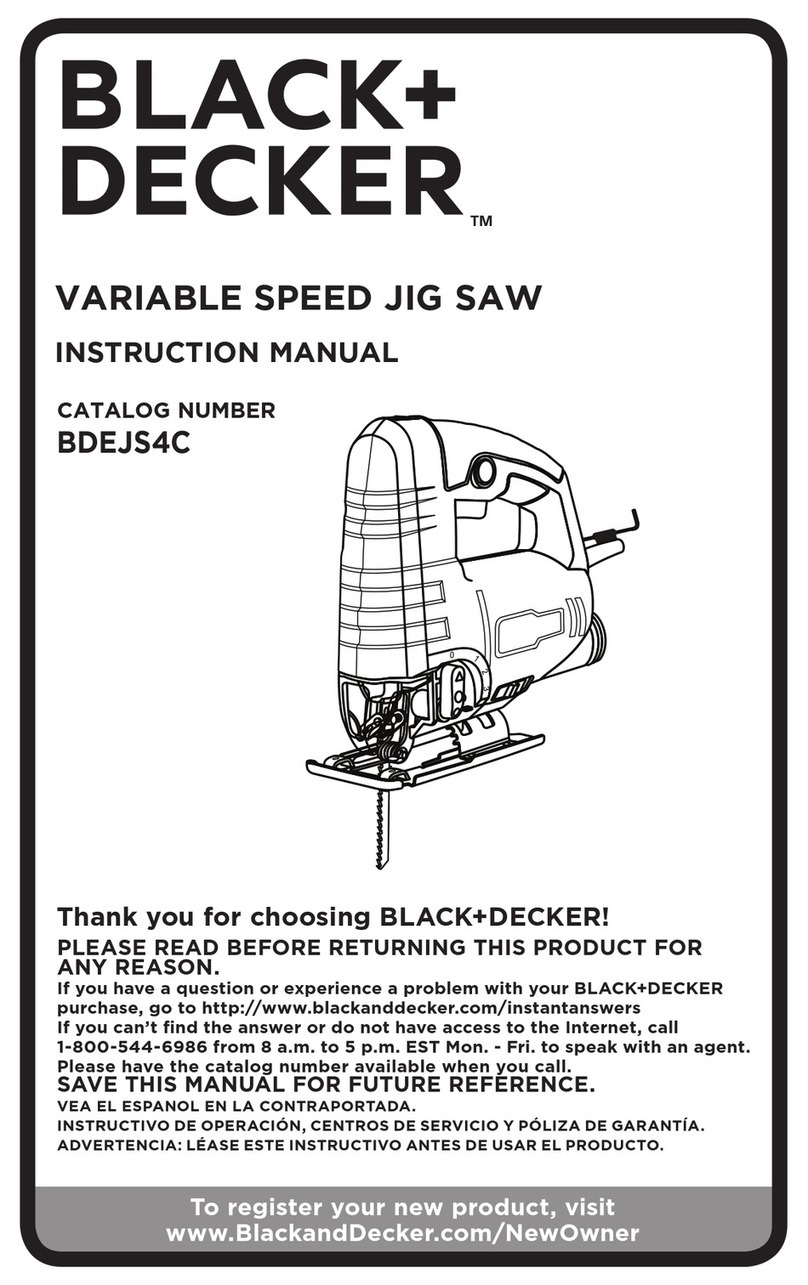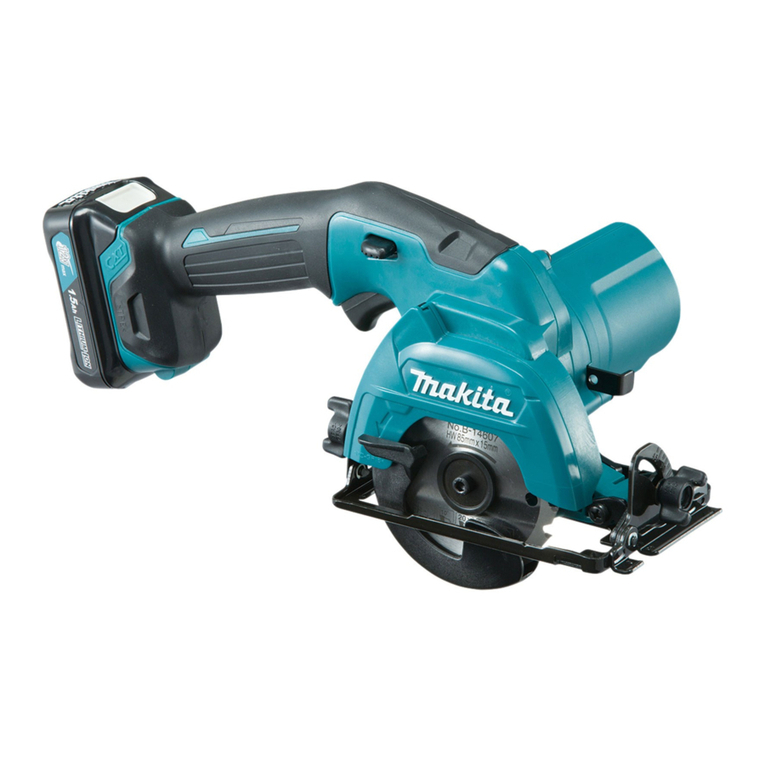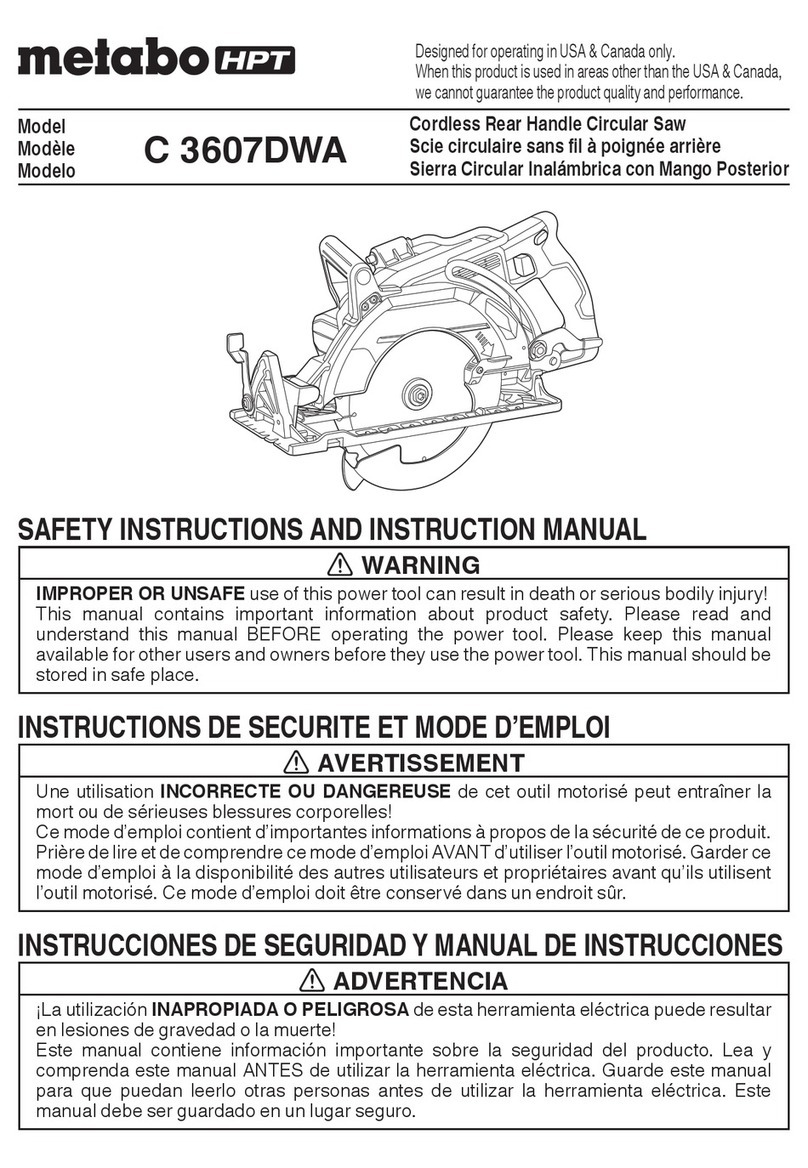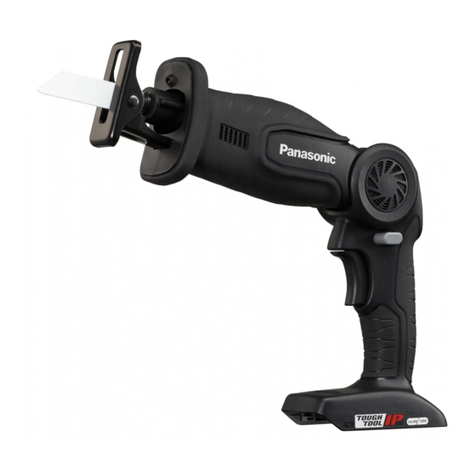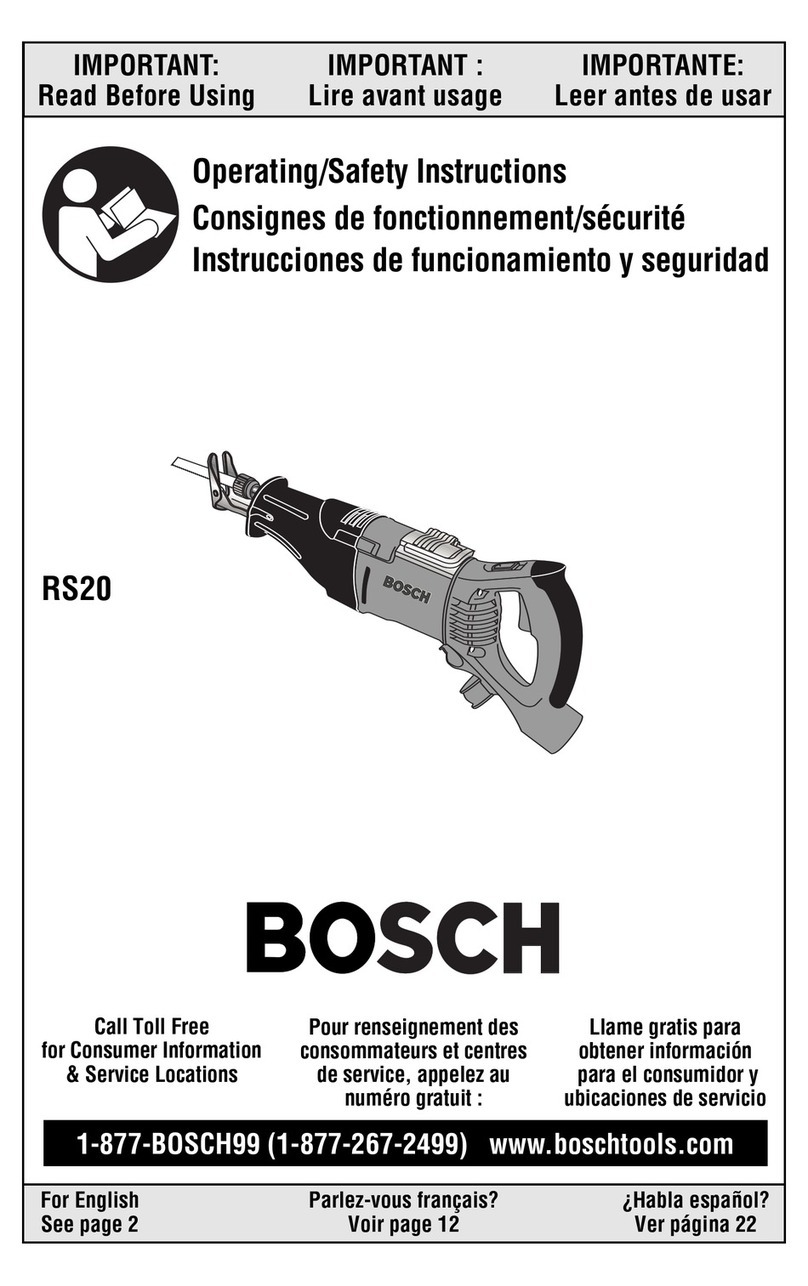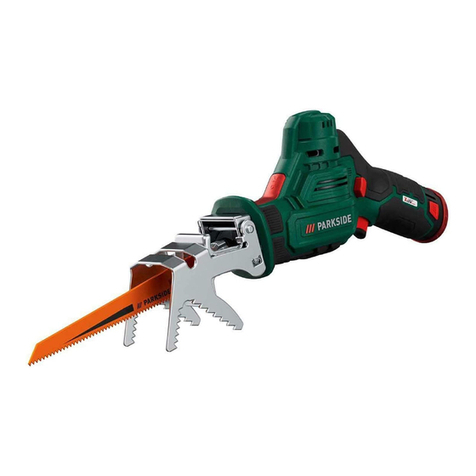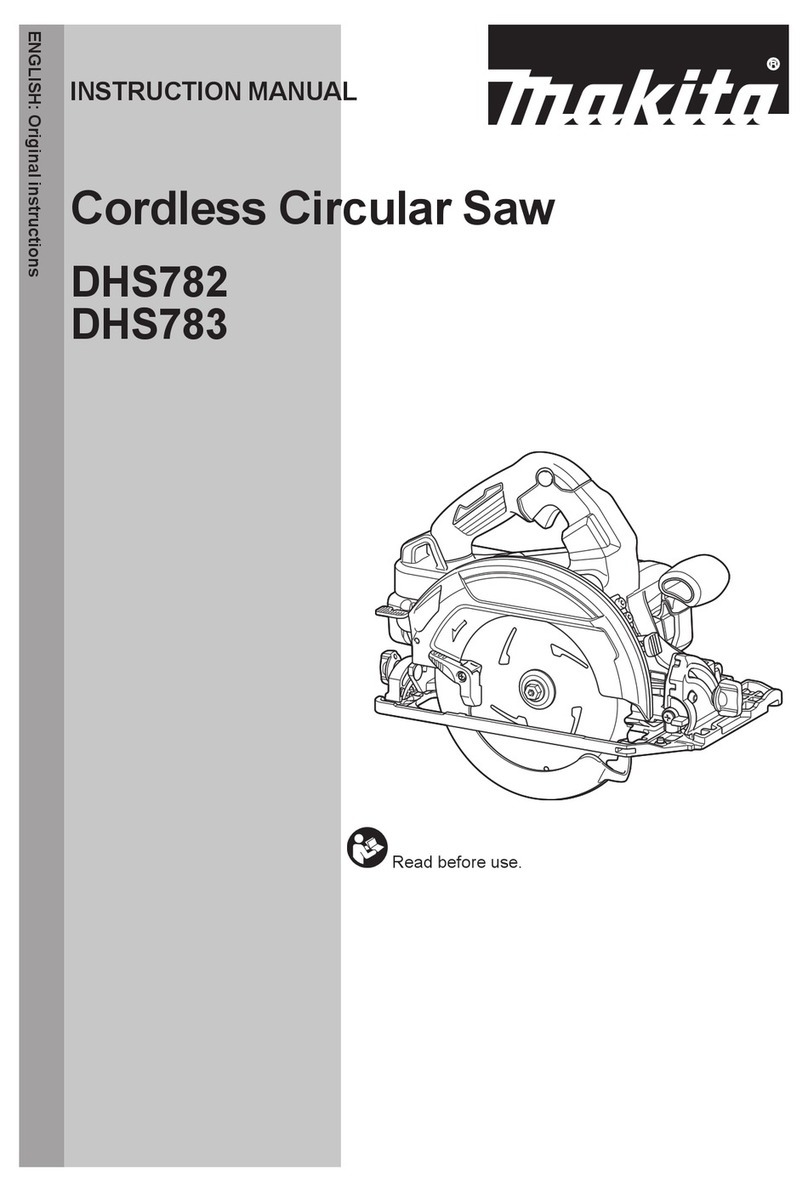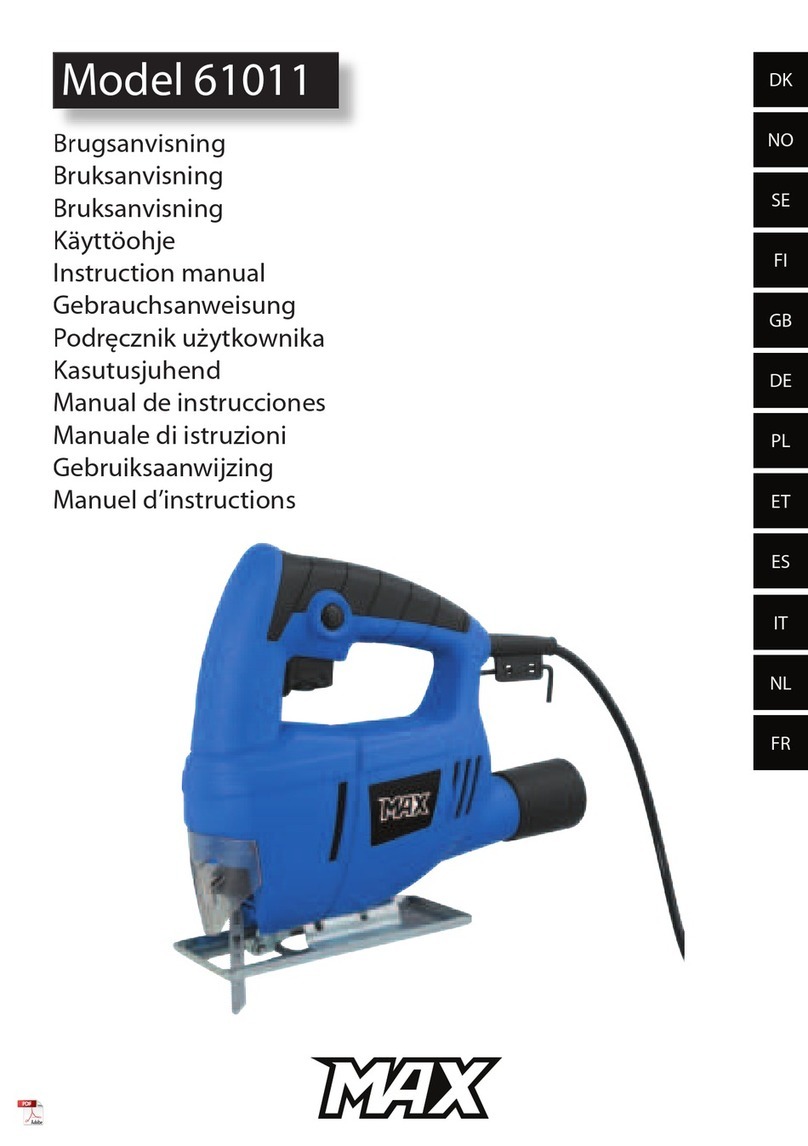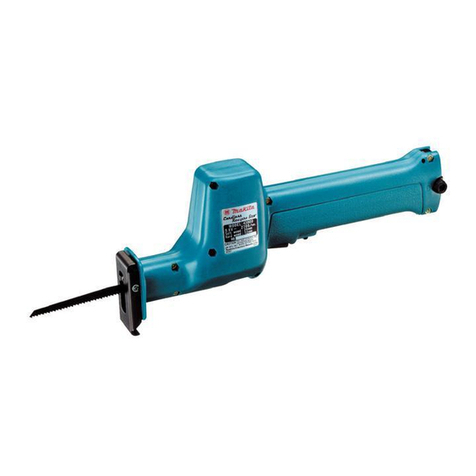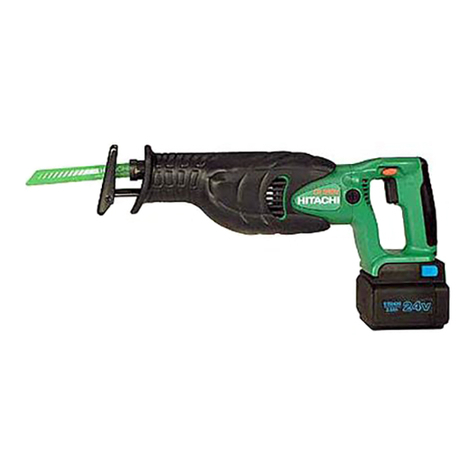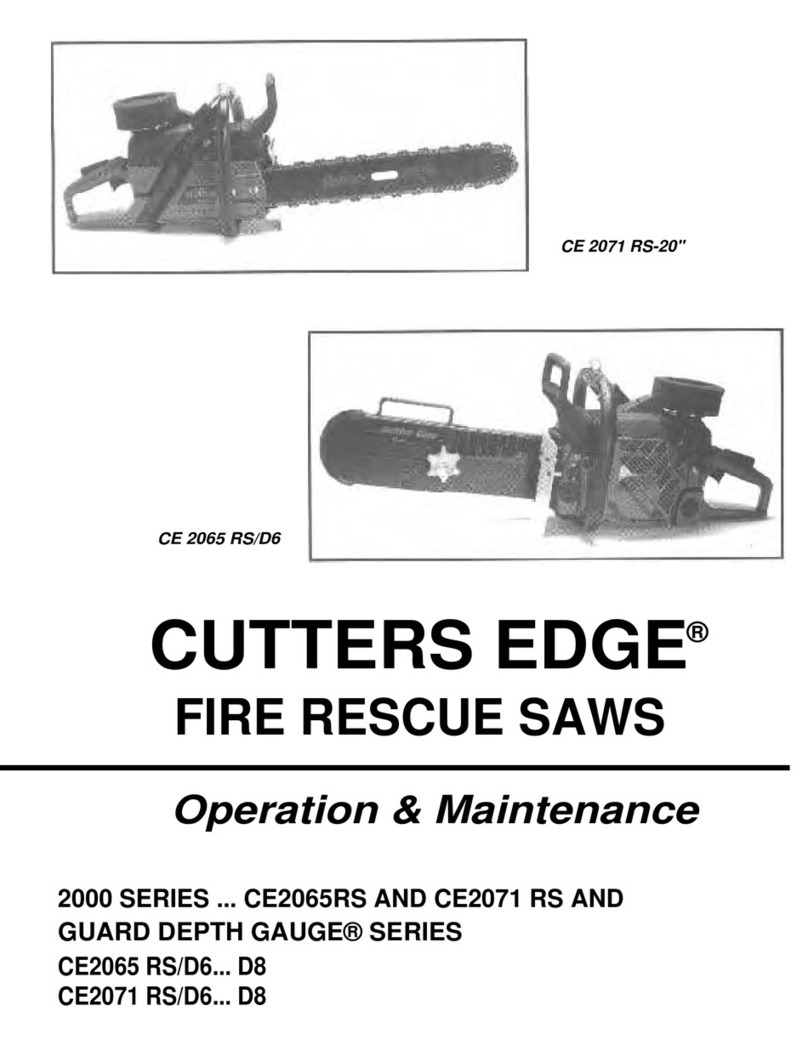2
f. Dress properly. Do not wear loose clothing or jewellery. Keep your hair,
clothing and gloves away from moving parts. Loose clothes, jewellery or
long hair can be caught in moving parts.
g. If devices are provided for the connection of dust extraction and
collection facilities, ensure these are connected and properly used.
Use of these devices can reduce dust-related hazards.
4) POWER TOOL USE AND CARE.
a. Do not force the power tool. Use the correct power tool for your
application. The correct power tool will do the job better and safer
at the rate for which it was designed.
b. Do not use the power tool if the switch does not turn it on and off. Any
power tool that cannot be controlled with the switch is dangerous and must
be repaired.
c. Disconnect the plug from the power source before making any
adjustments, changing accessories, or storing power tools. Such preventive
safety measures reduce the risk of starting the power tool accidentally.
d. Store idle power tools out of the reach of children and do not allow
persons unfamiliar with the power tool or these instructions to operate the
power tool. Power tools are dangerous in the hands of untrained users.
e. Maintain power tools. Check for misalignment or binding of moving parts,
breakage of parts and any other condition that may affect the power tools
operation. If damaged, have the power tool repaired before use. Many
accidents are caused by poorly maintained power tools.
f. Keep cutting tools sharp and clean. Properly maintained cutting tools with
sharp cutting edges are less likely to bind and are easier to control.
g. Use the power tool, accessories and tool bits etc., in accordance with
these instructions and in the manner intended for the particular type of
power tool, taking into account the working conditions and the work to be
performed. Use of the power tool for operations different from intended could
result in a hazardous situation.
5) BATTERY TOOL USE AND CARE
a. Ensure the switch is in the off position before inserting battery pack.
Inserting the battery pack into power tools that have the switch on invites
accidents.
b. Recharge only with the charger specified by the manufacturer. A charger
that is suitable for one type of battery pack may create a risk of fire when
used with another battery pack.
c. Use power tools only with specifically designated battery packs. Use of any
other battery packs may create a risk of injury and fire.
d. When battery pack is not in use, keep it away from other metal objects like
paper clips, coins, keys, nails, screws, or other small metal objects that
can make a connection from one terminal to another. Shorting the battery
terminals together may cause burns or a fire.
e. Under abusive conditions, liquid may be ejected from the battery; avoid
contact. If contact accidentally occurs, flush with water. If liquid contacts
eyes, additionally seek medical help. Liquid ejected from the battery may
cause irritation or burns.
6) SERVICE
a. Have your power tool serviced by a qualified repair person using only
identical replacement parts. This will ensure that the safety of the power tool
is maintained.
Additional Safety Instructions For Australia And New Zealand
a. Young children and the infirm. This appliance is not intended for use by young
children or infirm persons without supervision. Young children should be super-
vised to ensure that they do not play with this appliance.
b. Replacement of the supply cord. If the supply cord is damaged, it must be
replaced by the manufacturer or an authorised DEWALT Service Centre in
order to avoid a hazard.
Additional Specific Safety Rules for Jig Saws
• Hold tool by insulated gripping surfaces when performing an operation where
the cutting tool may contact hidden wiring. Contact with a “live” wire will make
exposed metal parts of the tool “live” and shock the operator.
• Allow the motor to come to a complete stop before withdrawing the blade
from the kerf (the slot created by cutting). A moving blade may impact the
workpiece causing a broken blade, workpiece damage or loss of control and pos-
sible personal injury.
